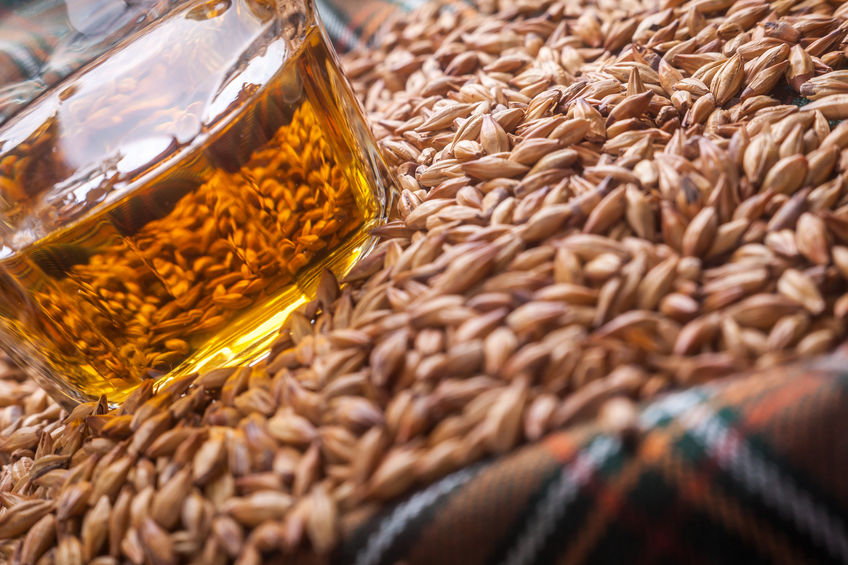
Researchers have identified key genetic markers in barley which could help growers meet malting specifications and lead to more efficient whisky production.
Research carried out by the James Hutton Institute and Scotland's Rural College (SRUC) aimed to identify genetic markers for diastatic power (DP).
DP is the ability of a malt to break down starches into simpler, fermentable sugars, during the mashing process.
This process is essential in the production of grain whisky where the mash consists of up to 90% of unmalted cereal with the remaining barley component added in quantities sufficient to breakdown the starch.
AHDB Cereal Product Quality Scientist, Dhan Bandari, said the work will help spring barley growers meet the malting specifications for the distilling and brewing markets.
He said: “Varieties with higher diastatic power can be used with higher proportions of unmalted cereal in grain whisky production, thus enhancing the overall yield of spirit.
“This potentially makes grain whisky production both quicker and cheaper, and increases the number of barrels of spirit produced per hectare of land used.”
Significant market
Grain whisky production exceeds single malt production and the market for high DP barley is currently in excess of 100,000t per annum, representing a significant market.
Dr Bill Thomas, one of the researchers who has worked on the two year DP GENES project, said: “Currently we tend to see that varieties with high DP and grain N tend to be low yielding.
“For example, producing high diastatic power malt with the current preferred variety (Belgravia) yields some 12% lower than new variety Laureate which has a lower diastatic power rating.
“The markers identified by this project will therefore allow breeders to combine high diastatic power with high yield and so produce premium barley which could improve profit margins of both growers and distillers.”
The research team used historical data to collate information on 100 spring and 100 winter barley lines, all with malting quality potential and varying in diastatic power potential.
After initial testing they then reduced these lines to 24 lines of spring and 24 lines of winter barley and used those to identify and validate candidate diastatic power genes.
Breeding programmes
While this work assessed known spring and winter barley lines the team felt they needed to broaden the scope to include untested lines.
UK barley breeders were asked to provide samples of germplasm from their new barley varieties, and the project was inundated with over 150 samples, a mix of spring and winter varieties.
All the samples were then grown on the James Hutton Institute farm and the markers used to predict high and low DP lines. The accuracy of the predictions was then tested by sending the samples to the Scotch Whisky Research Institute for micro-malting analyses.
“The project has enabled us to identify a group of genetic markers associated with high diastatic power which are compatible with current breeding programmes,” Dr Thomas explained.
“This means that varieties purposefully bred for high diastatic power and high yield could be available in the next five years.”
